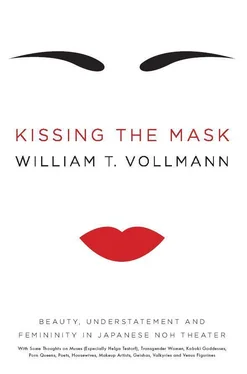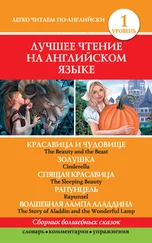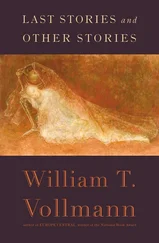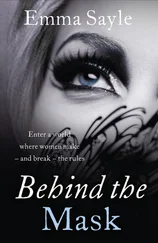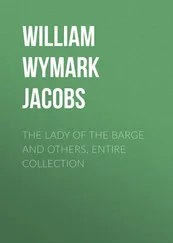1. Apply cleansing cream; do not wipe off.
2. Apply half a fingertip’s worth of oil, the hard kind in summer, soft in winter.
3. Mix powder with water in a dish to make paste. Apply with a hake brush, which should be washed afterward.
4. Sponge away any extra water from the face.
5. Apply face powder with a puff.
6. Use separate brushes to apply the red and black.
3See above, p. 110.
1Genetic girl. A woman who was born with a vagina.
2Transgender girls.
1Or possibly Hisa.
2You may recall that waka-onna means “young woman.”
1As Kenneth Clark wrote on the subject of Titian’s “Danaë”: “The extruding animal breast has been brought into conformity with human expectations.”
2Tadano Makuzu, 1818: “It is usually said that a woman should keep everything in her heart, say little, and be modest.”
1To discern beauty, why not also consider its opposite? The Lay of Rig describes the thrall wife, epitome of ugliness: crook-legged, drooping-nosed, dirty-footed, with sunburned arms. Her daughters bear such names as Shorty, Stout-Leg, Stumpy, Dumpy and Cinder-Wench.
2For a detailed tabulation of Eddic beauty-descriptions, see Appendix B.
3Mishima would have loved this. It is very characteristic that of his five modern Noh I have in translation, four of them have to do wholly or in part with cruel, controlling women. Naturally, he could not forgo to rework that tale of supernaturally lethal female jealousy, “Aoi-no-Ue.”
4About her the saga writer tells us more than is the case with most ancient Norse heroines: “She had such long hair that it could cover her completely, and it was radiant as beaten gold.” (She was also, typically enough, the most beautiful woman ever in Iceland.) On the subject of Norsewomen’s hair, it is surprising how rarely its color is mentioned in the ancient sources. But I assume that it was usually blonde or golden as Helga’s was. The lovely captive in the early-fourteenth-century romance of Bosi and Herraud is another case in point: “… never had they seen such a beautiful woman! Her hair was tied to the chair-posts, and was as fair as polished straw or threads of gold.”
5A number of Eddic heroines are Valkyries. They can be either “hateful and grim,” as is a certain Valkyrie in Odin’s hall, or white-armed and lovely in the fashion of Sigrún and Sigrdrífa. No matter what, they are proud, brave, meat-hungry. Davidson remarks that Valkyries may have gotten smoothed out into beautiful equestriennes, “but a different, cruder picture of supernatural women connected with blood and slaughter has also survived.” But they remain very feminine.
6What is fetish, what is stylization, and what is simple specificity? Thomas Blenman Hare has diagrammed inflection patterns for male and female roles in the play “Hagoromo,” which he calls representative. The pitch of the male voice either prolongs itself at a high point much beyond the other three forms of utterance, or else falls slightly, abruptly rises to a peak, then falls off. As for the two female modes, the first is a long, gentle rise with a flattened peak and then the beginning of an equally gentle fall; the other rises more steeply than it falls, but remains smoother in slope than the male forms. Is this more or less meaningful (beside being certainly more abstruse) than the “glamor spot” as a defining characteristic of the back of the female neck? Is a Norse kenning for a lovely woman merely mechanistic, or have I myself failed if I cannot sense the living femaleness in every use of it, just as I can in every living woman? In this attempt to discover the beautiful feminine I sometimes feel as if I am grappling with tissue paper.
7His saddest passage: “Not that the Esquiline girl represents an evolved notion of feminine beauty. She is short and square, with high pelvis and small breasts far apart, a stocky little peasant such as might be found still in any Mediterranean village.”
8For a brief discussion of how beauty and doom in medieval Norway have been treated by a gifted modern Norwegian writer, see the postscript to Appendix B.
9Sexual innuendo rarely grows explicit. An exception, from Kormak’s Saga : “So dear are you, sea-Freya, / to the sword of the love-hair’s island,” meaning the sword of the pudendum, namely the penis.
10He was the ko-kata , young Minamoto Yoshitsune.
11Meanwhile, the king’s sister Ingibjorg “was the loveliest woman in Norway,” and with characteristic ellipticality we are informed of her intimacies with the hero Kjartan (who is Gudrun’s intended) by the comments of his foster-brother, which he unconvincingly repudiates, and by the fact that she falls silent when he announces his determination to return to Iceland. When she gives him a gold-embroidered headdress, which will later be destroyed by Gudrun, she remarks: “I want the women of Iceland to see that the woman whose company you have been keeping in Norway isn’t descended from slaves.” What could be a more elegantly understated way of conveying both her love and her stoic pride?
12Lady Murasaki’s diary: “To be pleasant, gentle, calm and self-possessed: this is the basis of good taste and charm in a woman.”
1Could the translator have meant the Kiso cypress?
1The plastic wrapper on the plastic bathroom mug reads: “DISINFECTED. Maybe I’ve been hoping too hard. But I’ve gone this far. And it’s more than I hoped for.”
1You may recall that Zeami believed that an actor was at his peak at about thirty-five. Mishima’s suicide occurred at forty-five, the age when in Zeami’s opinion a Noh actor’s “own natural beauty of carriage and the appeal of his performance (which is so attractive to the audience) will fade gradually away,” unavoidably , he insists. For this reason he advises most fifty-year-old Noh actors to retire, but then immediately offers the example of his father, the great Kanami, who continued to perform up to his death at fifty-two. Although the old man left more difficult roles to others, and eschewed ostentation, “his flower looked better than ever. As his was shin-no-hana it survived until he became old without leaving him, like an old leafless tree which still blossoms.”
2Most of the books are in Japanese, but here and there lurks a two-volume monograph on Dutch painting from the National Gallery, or Günter Grass in English, or Fiesta Brava , or La peinture manièriste .
3Mishima might reply: “What grace?” or, more likely, “Isn’t grace the same as death?” — Who could deny the Heian snobbery of Komachi’s day, which Mishima skewers by having a lady explain: “There’s always something slightly crude about a dress made by a Japanese?”
4Zeami writes in his treatise on “finding gems and gaining the flower” that an ideal performance can be accomplished when the actor somehow translates the musical atmosphere he has created into its visual expression; and Mr. Kanze’s Komachi was first of all a wobbling voice and then the tremulous physical representation of that voice; he trembled as gracefully as does shimmering water.
1It is this text to which Mishima’s Decay of the Angel is indebted for its title. In the original Noh play, which may predate Zeami, a man refuses to return an angel’s celestial cloak, and she accordingly displays the fivefold signs of corruption.
1The fourteenth-century stage lacked both back walls; and the bridge lay where the pine tree now presides.
2Hare reminds us that it likewise expresses allegiance to the sovereign. Here for instance is a couplet of Zeami’s: “I celebrate my lord in the aged pine, / expecting him to live ten thousand years.”
3In “Hanjo” a similar pun on pining and pine trees is offered by the shite , the prostitute Hanago.
Читать дальше
